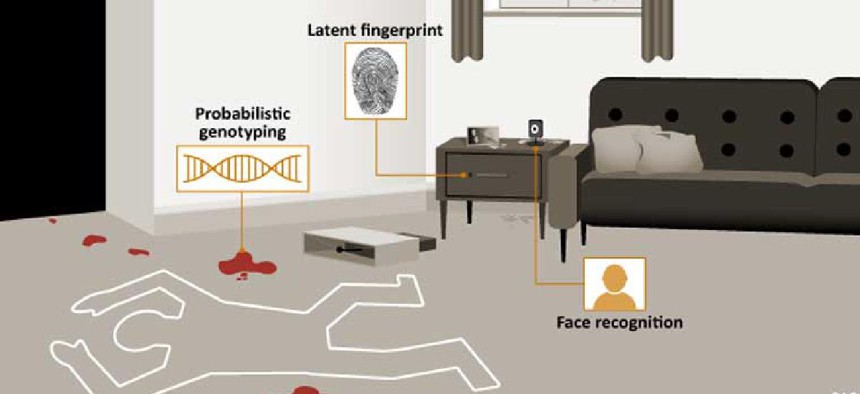How law enforcement uses forensic algorithms

A new report from the Government Accountability Office describes how federal law enforcement agencies analyze fingerprint, photo and DNA evidence in criminal investigations.
In the 1960s the FBI, in partnership with the National Institute of Standards and Technology, began researching ways to automate comparisons of fingerprints, DNA samples and other forensic evidence. Prior to these developments, GAO said, these comparisons were made manually by experts and were subject to errors and resource constraints.
Thanks to advancing technology, including the growing availability of artificial intelligence, law enforcement agencies can use forensic algorithms to generate candidate suspects or investigative leads, speeding investigations and reducing human bias and error. The Government Accountability Office was asked by Reps. Eddie Bernice Johnson (D-Texas), Frank Lucas (R-Okla.), Carolyn Maloney (D-N.Y.) and Mark Takano (R-Calif.) to examine the use of forensic algorithms in federal law enforcement, explain how those technologies work and help assess the link between evidence collected in a criminal investigation and a suspect.
Working with NIST and the Departments of Justice, Homeland Security and Defense, GAO reviewed relevant literature and case law, conducted interviews and talked with 16 experts between August 2019 and May 2020.
The first of two reports focuses on the “review on automated or partially automated computer-software based algorithms used for analyzing forensic evidence during a law enforcement investigation to help establish a link between an individual and collected evidence,” GAO said. The second report will assess challenges in how these technologies are applied by federal law enforcement agencies and identify policy options for addressing those issues.
Federal law enforcement agencies primarily analyze fingerprint, photo and DNA evidence in criminal investigations.
Fingerprint analysis can quickly compare latent prints left at crime scenes with those in the FBI’s database of known persons. Facial recognition algorithms can flag a subset of photos from a gallery as a starting point for trained examiners to follow up. Using probabilistic genotyping software (PGS), investigators can compare a genetic profiles from persons of interest. Some agencies also use iris, voice and handwriting recognition algorithms, and others are developing algorithms that can analyze a person’s walking gait, tattoos and even peptides.
The FBI’s Criminal Justice Information Services’ Next Generation Identification system houses a repository of biometric and criminal history data that it uses, along with latent print and facial recognition algorithms, to determine whether evidence may have originated with an individual. The Drug Enforcement Administration also uses NGI for identifying latent prints.
DHS uses its Automated Biometric Identification System called IDENT for face recognition and latent print analysis. It is the agencywide system for biometric information supporting national security, law enforcement, immigration and border management, intelligence and background investigations. The Transportation Security Administration uses FBI and DHS biometric fingerprint algorithms and is testing Customs and Border Protection’s facial recognition technology with passengers who have opted into the TSA biometric testing program.
DOD’s Defense Forensic Science Center uses forensic algorithms – latent print analysis and probabilistic genotyping -- in criminal investigations. It has developed its own open source software for latent print analysis.
The report also explains how the technologies work -- how the models estimate the probability that the test results from the evidence sample match a particular person when the samples often contain evidence of more than one person. It also briefly discusses the shortcomings of the technologies and their reliance on human experts for validation.
Read the full report here.






